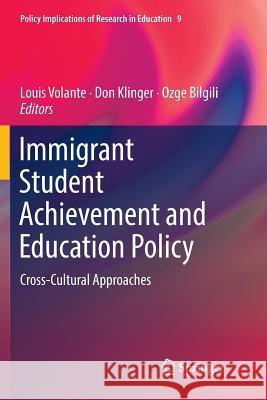Immigrant Student Achievement and Education Policy: Cross-Cultural Approaches » książka
topmenu
Immigrant Student Achievement and Education Policy: Cross-Cultural Approaches
ISBN-13: 9783030089108 / Angielski / Miękka / 2018 / 214 str.
Kategorie:
Kategorie BISAC:
Wydawca:
Springer
Seria wydawnicza:
Język:
Angielski
ISBN-13:
9783030089108
Rok wydania:
2018
Wydanie:
Softcover Repri
Ilość stron:
214
Waga:
0.33 kg
Wymiary:
23.39 x 15.6 x 1.24
Oprawa:
Miękka
Wolumenów:
01
Dodatkowe informacje:
Wydanie ilustrowane











